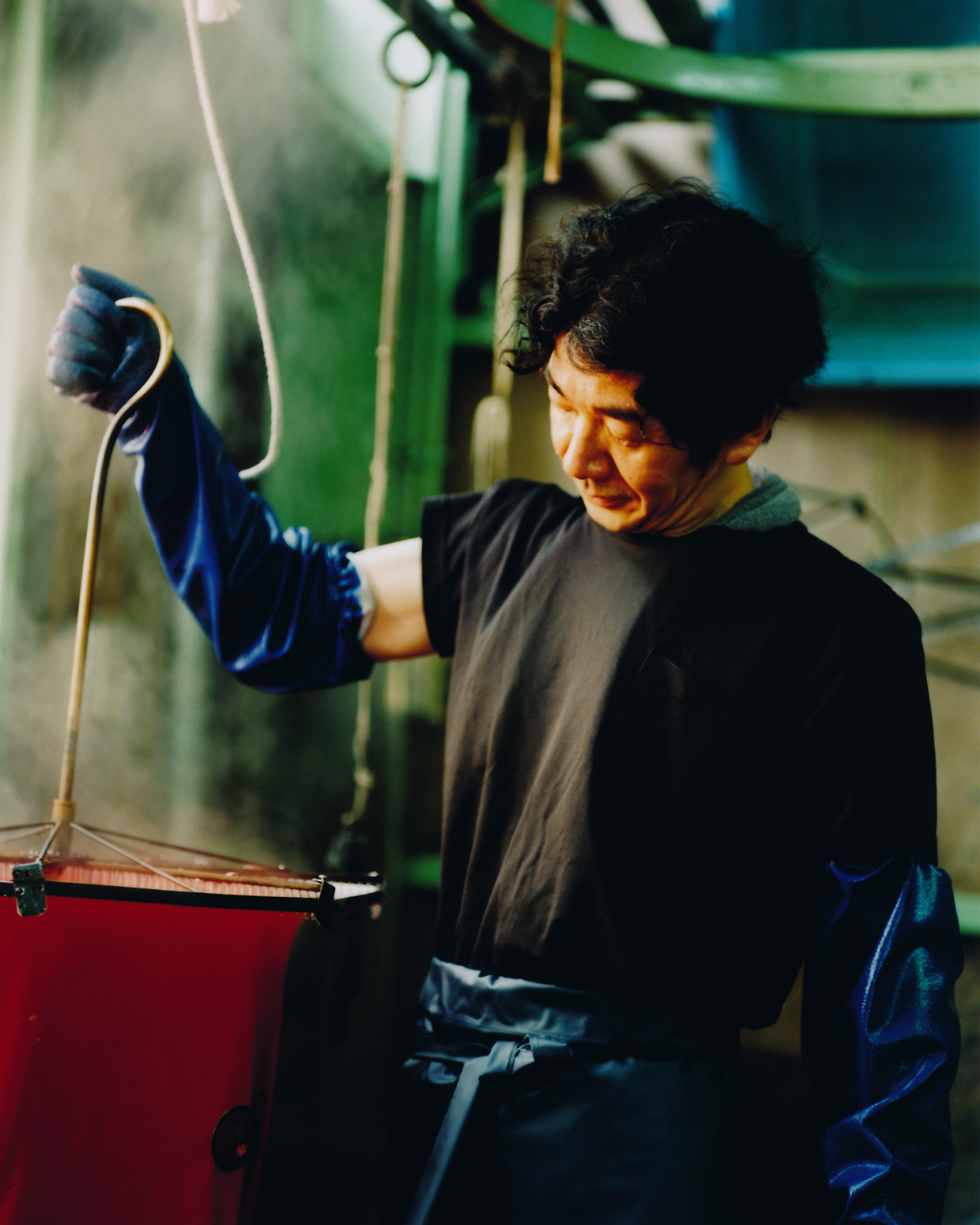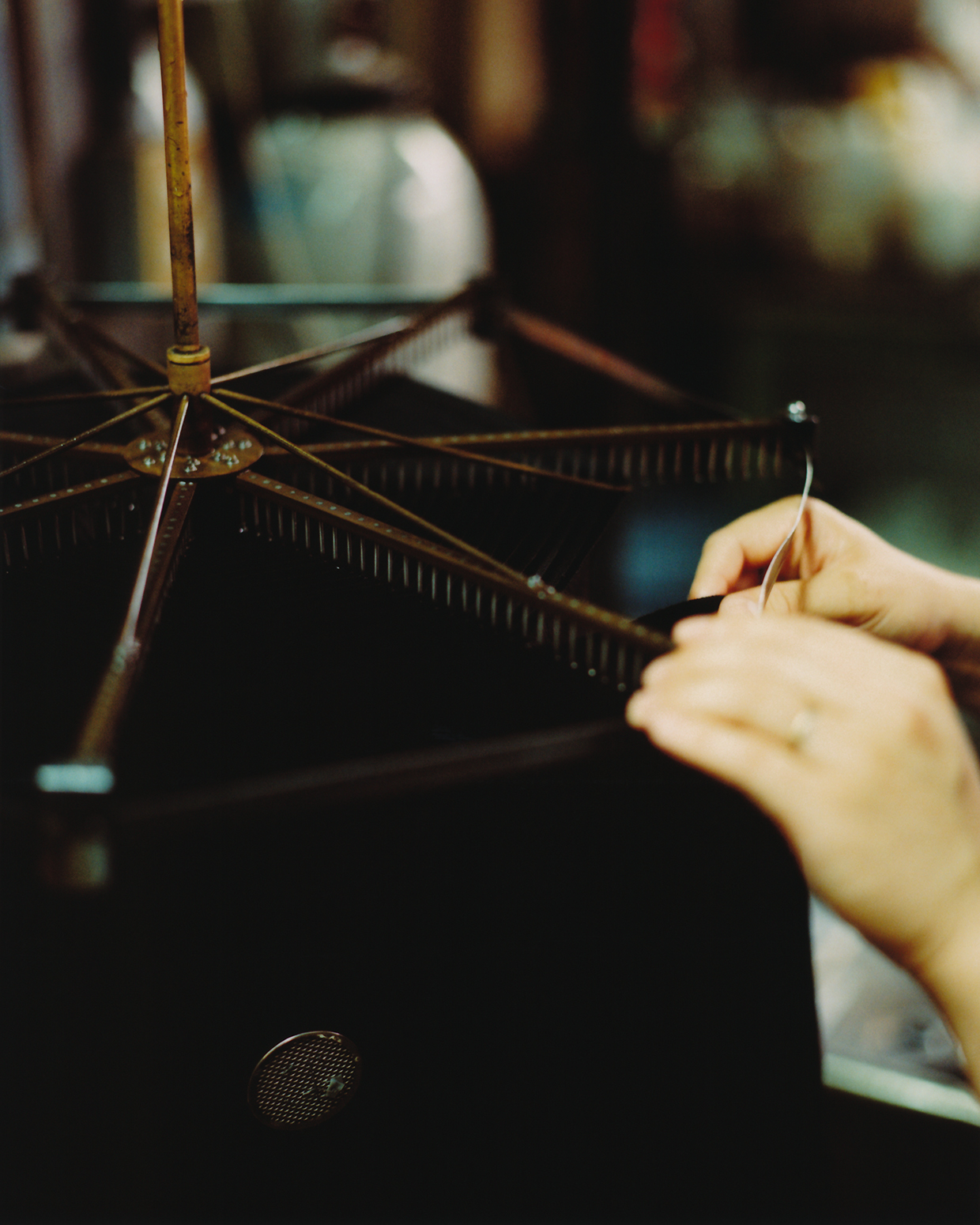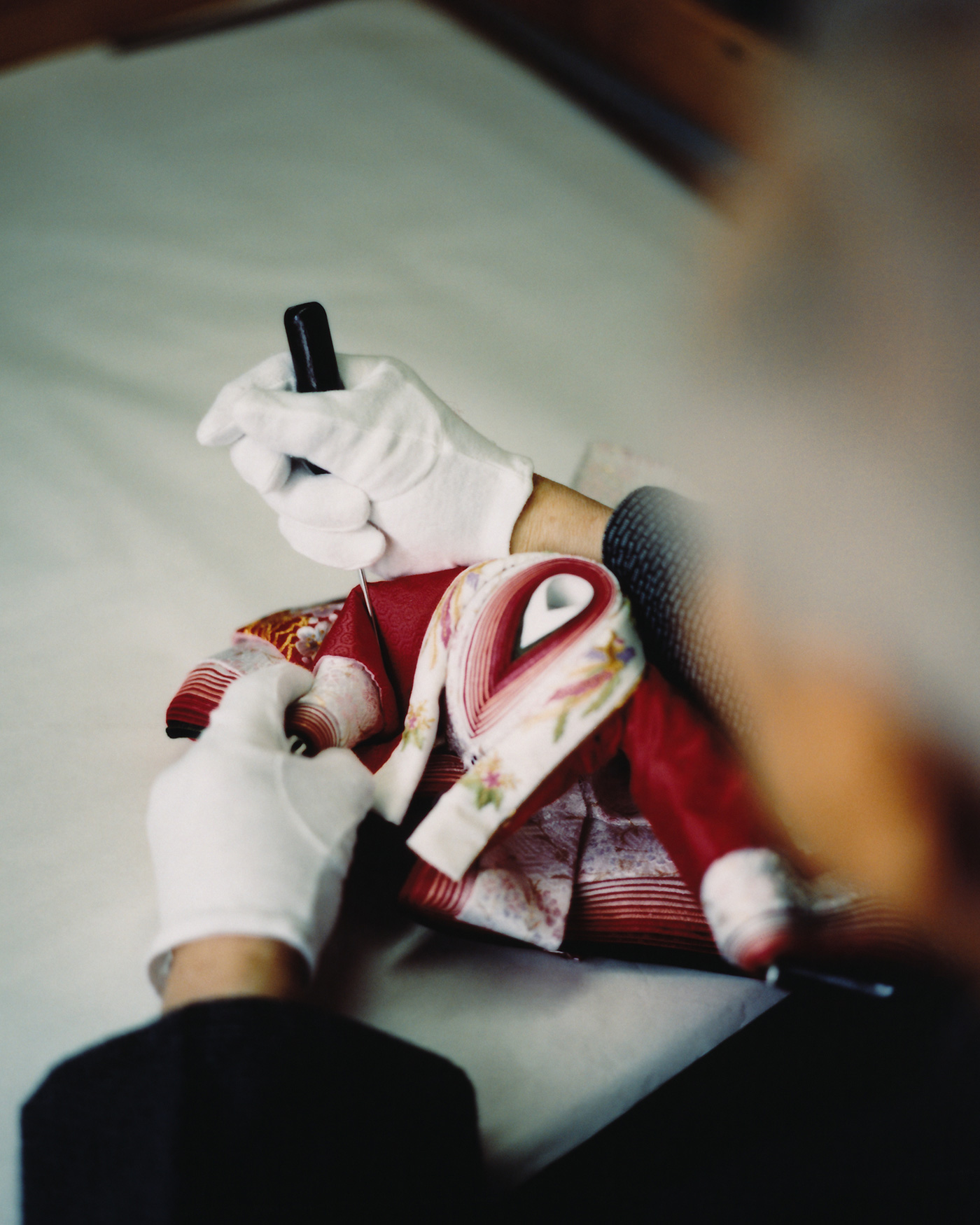How is traditional “black” different from what we usually think of as “black”?
I think it is easy to understand when you compare the commercially available black and the black dyed at our company. They are totally different, aren’t they? There is a reddish tint. It is a technique to make the recipe for the dye mixture. In the case of kimono, it is dyed red and then dyed black. The definition of traditional crafts is to pre-dye silk and dye it black.
In terms of the quality of black, for example, a black T-shirt on the market is an industrial product. An industrial product is a product of how efficiently it is made, how little material is used, and how much profit is made. Therefore, it is “just as long as it looks black. However, what we are aiming for is that “proper black must be dyed. No matter how expensive the materials we use, the goal point is that we have to do a proper job, no matter how expensive they are. The highest quality. So I think it’s natural that we can produce something completely different because the direction we are heading is different.


What exactly do you mean by “top quality”?
After all, it is a color that cannot be produced by a machine. I think it is quite amazing to have the skill to pinpoint the color you want and go for it. It is also possible to create nuance. For example, when dyeing a costume for a movie, you have to think about the scenery of the scene and whether the tone should be a little darker or lighter. I think about that and decide which way to turn it. Machines do not have feelings, so they cannot think in that way. It is important to have nuances, such as, “I think it would be better to use a lighter tone for this scene,” or “I used a bit too much red, but I hope it will be okay.

Is there such a thing as a recipe for color chips or dye blends for the colors to be dyed?
There is only a recipe, or rather a color sample book of the finished product. The materials that were dyed by the previous generation are still there, so we try to use them in the same way. However, the materials used for dyeing are different, and when the materials change, the dyes change. If the dyes are changed, the recipe is useless. Therefore, we keep adjusting the recipe each time to target this color and protect the color. Our strength and skill is our ability to make such adjustments.

Does the traditional “black” in Japan have any special meaning?
Japanese are a tribe that uses black a lot. When you look at the world, Germany also has a high level of dyeing technology, but in the case of Germany, black is one of the various colors used in dyeing. But it is interesting to note that in Japan, black dyeing shops have been established. Black is such a noble color, and the Japanese used black a lot.
There are only three black dyeing companies now, but 20 years ago, there were about 20 companies. Our company had sales of 100 million yen from late 1965 to 1975. Isn’t that amazing? Just for black dyeing.
In the old days, when there was a bride-to-be, she always brought a crested kimono as a wedding present. The more weddings there were, the more money we made. Montsuki was an integral part of everyone’s life. Today, it has become an everyday item, but the traditional industry was something that was used on a daily basis. In the old days, funerals and weddings were all held at home, so it was necessary to bring a montsuki as a wedding present.








